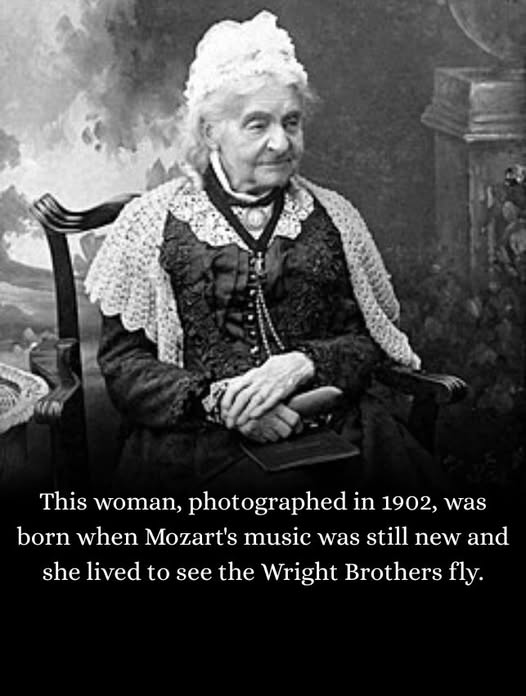
Look carefully at this photograph from 1902.
The elderly woman staring back at you was born in 1792—when George Washington was still President of the United States, when the guillotine was falling in Revolutionary France, and when the entire concept of photography wouldn’t be invented for another four decades.
Her name was Margaret Ann Neve, and she would become one of the most remarkable humans ever documented.
When Margaret entered the world on the island of Guernsey in 1792, King George III ruled Britain, Napoleon was a young military officer, and the 19th century hadn’t even begun. She grew up in a world lit by candlelight, traveled by horse and carriage, and communicated through handwritten letters that took weeks to arrive.
But Margaret wouldn’t just witness one century—she would conquer three.
As the decades rolled forward, Margaret watched the world transform around her in ways no generation before had ever experienced. She saw the Industrial Revolution reshape society. She witnessed the rise and fall of empires. She lived through the invention of the telegraph, the railroad, the telephone, and finally—remarkably—she sat still long enough to have her photograph taken.
Margaret didn’t spend those 110 years in isolation, quietly waiting for time to pass. She lived.
Alongside her sister Elizabeth, who herself would reach 98, Margaret traveled extensively across Europe—an extraordinary feat for women of their era. In 1872, when Margaret was already 80 years old, the sisters made their final grand journey together to Kraków, then a vibrant city in the Austro-Hungarian Empire.
Their mother had lived to 99. Longevity ran through their family like a genetic gift, but Margaret took it further than anyone could have imagined.
On April 4, 1903, Margaret Ann Neve passed away at 110 years and 321 days old. When she died, she held two records that seemed almost mythical: she was the first verified woman ever to reach 110 years of age, and only the second person in recorded history to do so.
But her most astonishing achievement? Margaret Ann Neve remains the first documented human being to have lived in three different centuries.
Think about that for a moment. She was born in the 1700s, lived through the entire 1800s, and made it into the 1900s. She began life in the Age of Enlightenment and ended it in the Age of Innovation.
When she was born, people traveled by horse. When she died, they were on the verge of flying.
Margaret’s story is more than a footnote in record books—it’s a window into the breathtaking pace of human progress. It reminds us that a single lifetime can span worlds, that one person can serve as a living bridge between eras we think of as impossibly distant from each other.
Her photograph, taken just a year before her death, captures something profound: a woman who saw everything change, yet remained herself throughout it all.
Margaret Ann Neve didn’t just survive 110 years.
She witnessed the birth of the modern world—and carried the memory of one that no longer exists.
